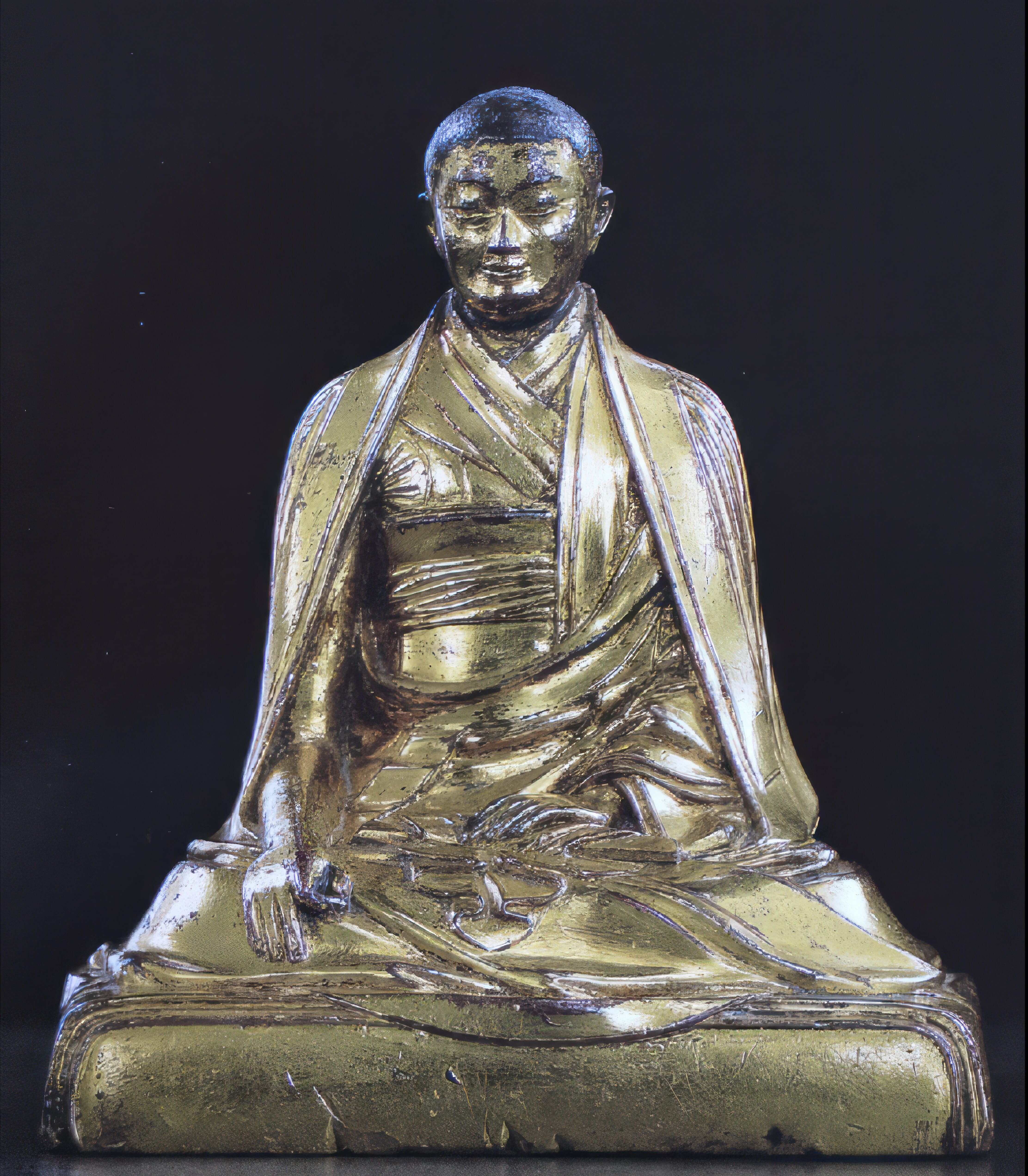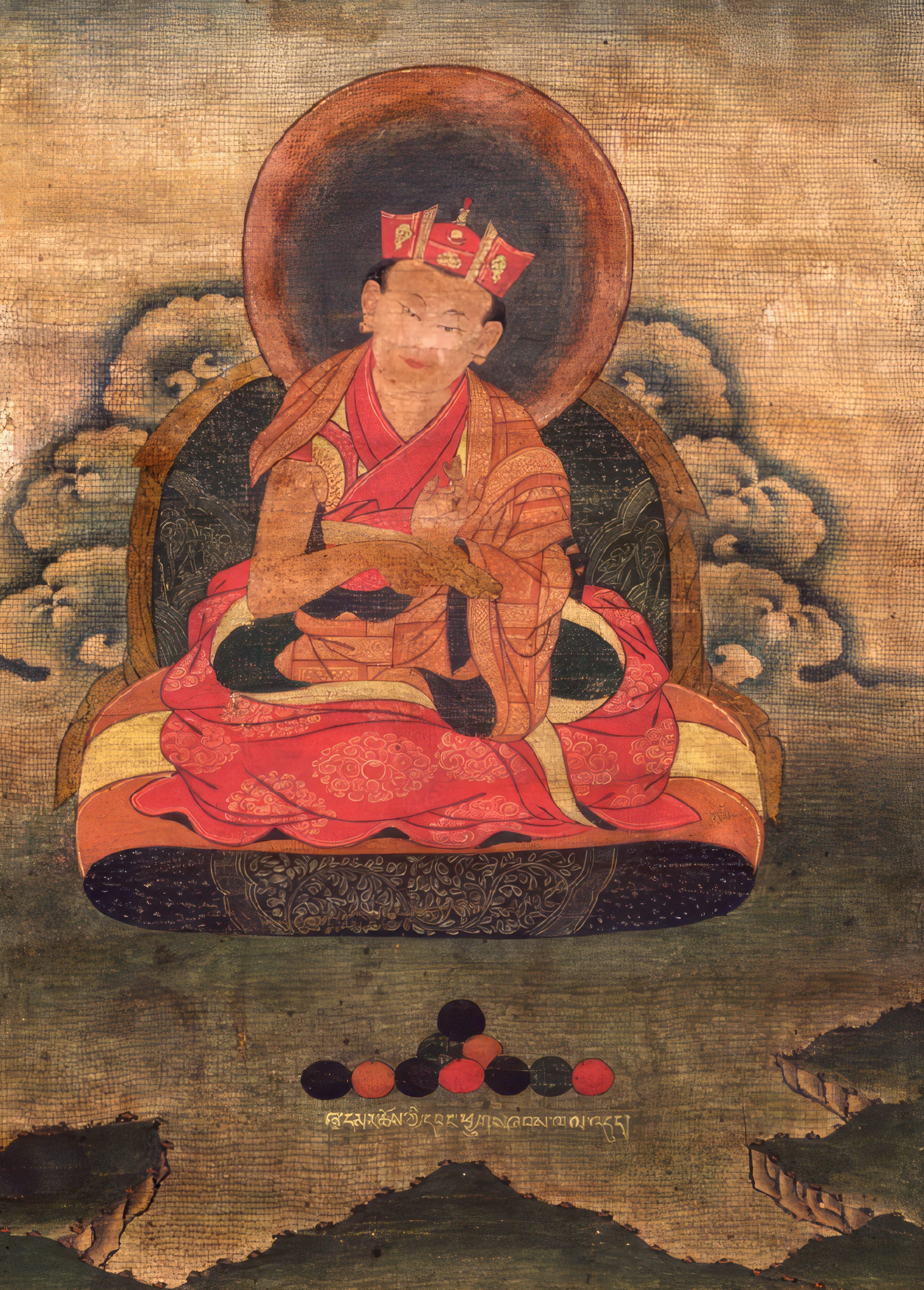 Born in Drikhung, central Tibet, the 6th Incarnate of the Shamarpa was recognized by Wangchuk Dorje the 9th Karmapa. It was through the sensitive guidance of him that the beautiful flower of the Shamarpa’s intellect came to the richest fruition.
Born in Drikhung, central Tibet, the 6th Incarnate of the Shamarpa was recognized by Wangchuk Dorje the 9th Karmapa. It was through the sensitive guidance of him that the beautiful flower of the Shamarpa’s intellect came to the richest fruition.
At the early age of 16, the 6th Shamarpa fully assimilated and committed to memory ten books on the subject of Prajnaparamita, sixteen on the Vinaya, five on the Abhidharma, seven treatises on medicine, the Sanskrit language and various arts and crafts; within the range of the vajrayana teachings, there were the Zamo Nang Dön and its commentary as well as the full text of the Kalachakra Tantra.
In his youthful exuberance, he expressed the wish of testing his freshly acquired learnings before the best minds of the land. Scholars came at his invitation totally unprepared for what they were about to witness. Their minds boggled at so much learning, being so fully assimilated, by one so young, and they prostrated before him in sheer admiration and wonder: “it is the maha-bodhisattva Manjushri himself.” they declared.
His wisdom and intelligence were further demonstrated when he came to the Namring Institute, challenging the highly esteemed scholastics to a religious debate which lasted for eleven days.
Each day, a different aspect of the Buddha appeared, in a vision, before him. On the first day, there were Maitreya and Manjushri appearing as one. On the next day, it was the Lord Buddha Sakyamuni, to be follow successively by Tara, Sarasvati (Yangchenma) Avalokiteshvara (Chenrezi) and the Medicine Buddha. As they appeared, songs of praise welled up in him in adoration. As he recorded these songs, his analytical mind remained as tempered steel before his opponents. His words were the epitome of eloquence.
In each of the hundred and eight beads of his rosary, he saw the form of Manjushri, and that of Kurukula (a red form of Tara) Vajravarahi and Hayagriva. On the final day, he saw everything undifferentiated from Manjushri and every one in the forum, in the form of that Buddha.
 The fame of the Shamarpa spread rapidly through Tibet. Thirteen of the most learned Bönpo priests regarding him as a formidable threat to their religion, jointly challenged him to a debate. In defeat, they all became buddhists. As for the Shamarpa himself, through the relentless pursuance of the three beneficent spheres of activity – learning, meditating and practical achievements, he became a veritable king of the Kagyü Teachings.
The fame of the Shamarpa spread rapidly through Tibet. Thirteen of the most learned Bönpo priests regarding him as a formidable threat to their religion, jointly challenged him to a debate. In defeat, they all became buddhists. As for the Shamarpa himself, through the relentless pursuance of the three beneficent spheres of activity – learning, meditating and practical achievements, he became a veritable king of the Kagyü Teachings.
He visited China, at the invitation of the Emperor, who in fulfilling the wishes of his Guru, saw to the printing of the complete set of the Buddha’s Teachings – the Kanjur.
Returning to Tibet, he enthroned the 10th Karmapa Chöying Dorje, passing the instructions of the Kagyü Lineage on to him, in the capacity of a root guru.
As the fame of the Shamarpa spread further into India, twenty five of the greatest panditas residing in Bodh-Gaya, invited him to teach the Dharma. Regrettably he was unable to accept their invitations. He replied separately, giving individual attention to their every problem. They corresponded in Sanskrit.
Tibet was, for a time, on the obstinate course towards a civil war. The Shamarpa through skillful persuasion had reminded the rulers of the basic principles in Dharma, whereby saving many innocent lives.
Before the Shamarpa went to Chubar where he was to be joined by the Karmapa, his time was fruitfully spent in Nepal, giving spiritual advice to the King, visiting the numerous holy places in the country and meeting many of the teachers of high esteem, who upon receiving the nectar of his instructions were moved to become his disciples.
Chubar where they had chosen for their final meeting, was a very holy place indeed, sanctified by the presence of both Milarepa and Gampopa. It was evident to both the Karmapa and the Shamarpa that the splendor that had been the 6th Shamarpa’s life was fast drawing to a close. What little time left, was frugally employed in completing the passing on of the Kagyü teachings.
The Shamarpa left behind him many accomplished disciples of diverse nationalities and social backgrounds, the foremost of which were the 10th Karmapa, the 5th Tai-Situ Rinpoche and the 5th Gyaltsap Rinpoche.